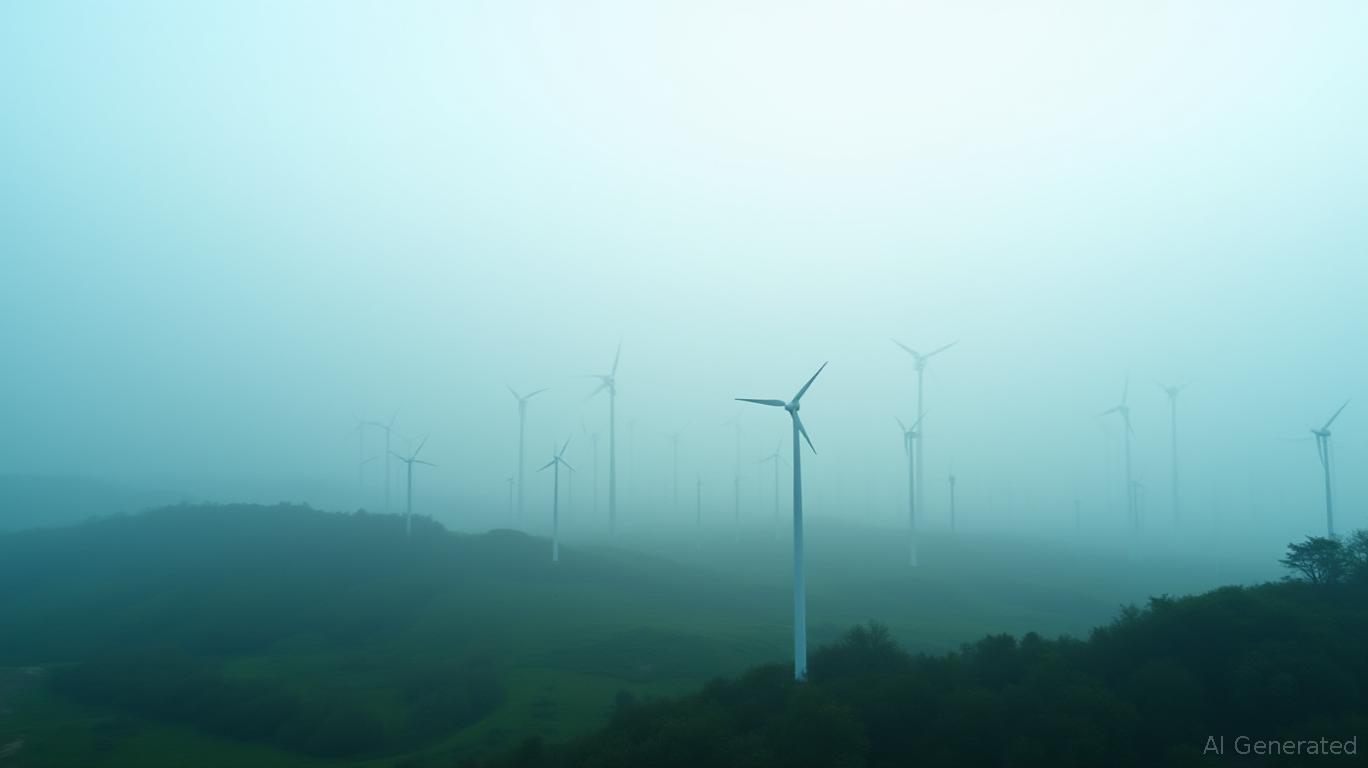Harnessing the Winds of Change: Zhejiang Juhua's Renewable Pivot Amid China's Decarbonization Drive
China's push toward decarbonization has become a defining force in corporate strategy, and Zhejiang Juhua's recent capital injection into Jinju Chemical's wind
expansion underscores the urgency of this shift. While specific details about the scale or timeline of this investment remain opaque, the broader context of China's renewable energy ambitions provides critical clues about the strategic rationale—and the risks—involved.A Strategic Bet on Renewables
The move aligns with Beijing's aggressive targets to curb carbon emissions, which include a goal to peak carbon dioxide emissions before 2030 and achieve carbon neutrality by 2060.

For Jinju Chemical, a firm historically tied to traditional energy sectors, the wind farm project likely aims to diversify its energy portfolio, reduce reliance on fossil fuels, and capitalize on the surging demand for green power. Such investments also position the company to benefit from preferential policies, such as tax breaks for renewable projects or guaranteed grid access.
Opportunities: Riding the Policy Wave
The strategic advantages are clear. China's 2025 energy priorities emphasize accelerating renewable deployment, with state-backed banks offering low-interest loans for green initiatives. Additionally, the new energy law mandates that utilities integrate higher shares of renewable energy into their grids, creating a stable demand environment for wind power producers.
Investors should note that companies like Zhejiang Juhua, which are early movers in this sector, could secure advantageous project licenses and long-term power purchase agreements (PPAs) with utilities. These PPAs, which guarantee revenue streams, are critical for mitigating the volatility inherent in renewable energy projects.
Risks: Navigating Regulatory and Market Uncertainties
Yet challenges loom. The lack of transparency in Zhejiang Juhua's investment specifics—such as the capital structure or project timeline—raises questions about financial risk. Without clear metrics, investors must rely on broader sector trends, which include rising raw material costs (e.g., for turbine components) and the unpredictability of policy implementation.
Moreover, the wind energy sector faces geographic and technical hurdles. While Zhejiang's coastal location offers strong wind resources, projects in less optimal regions may underperform. Technical risks, such as grid instability or turbine maintenance costs, could also eat into profits.
Investment Considerations
For investors, the Zhejiang Juhua-Jinju Chemical venture represents a microcosm of China's renewable energy landscape: high-potential but fraught with execution risks. Key considerations include:
1. Policy Dependence: Track the rollout of subsidies and grid-access rules. A slowdown in regulatory support could delay project returns.
2. Cost Dynamics: Monitor global commodity prices for steel and rare earth metals, which are critical for turbine manufacturing.
3. Project Scale: Even without exact figures, analyze Jinju Chemical's historical project management track record and its ability to execute large-scale infrastructure.
Conclusion: A Cautionary Optimism
Zhejiang Juhua's strategic shift toward wind energy reflects a necessary evolution in China's industrial landscape. While the lack of granular data on this specific project limits precise risk assessment, the macro trends are undeniable. Investors should approach such ventures with a long-term lens, prioritizing firms with strong balance sheets and partnerships with state-backed entities.
In a decarbonizing economy, the wind is finally blowing in the right direction—but only for those with the foresight to navigate its turbulence.
Note: Specific stock data not available in the provided context. Investors are advised to consult real-time financial platforms for up-to-date metrics.

Comments
No comments yet